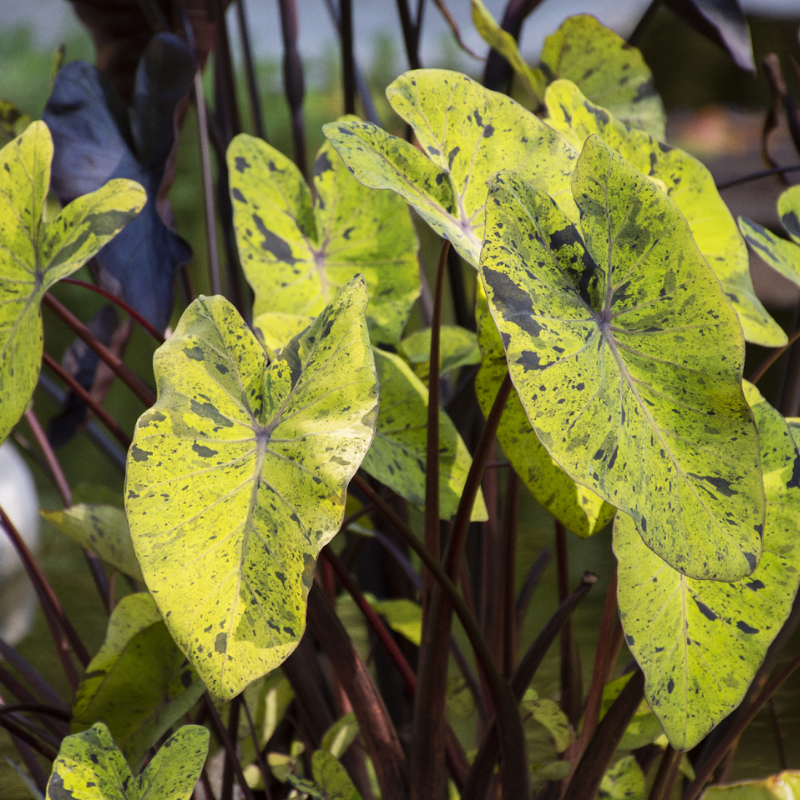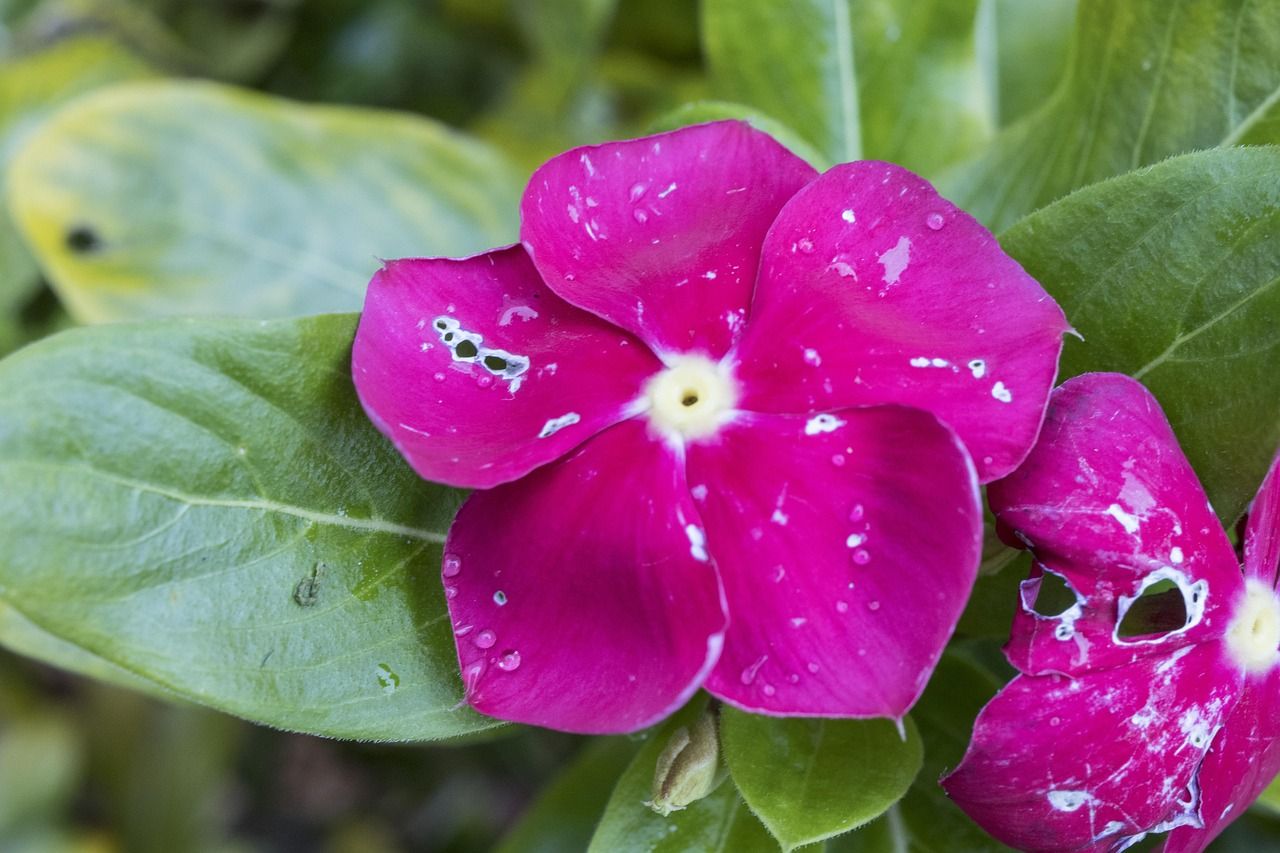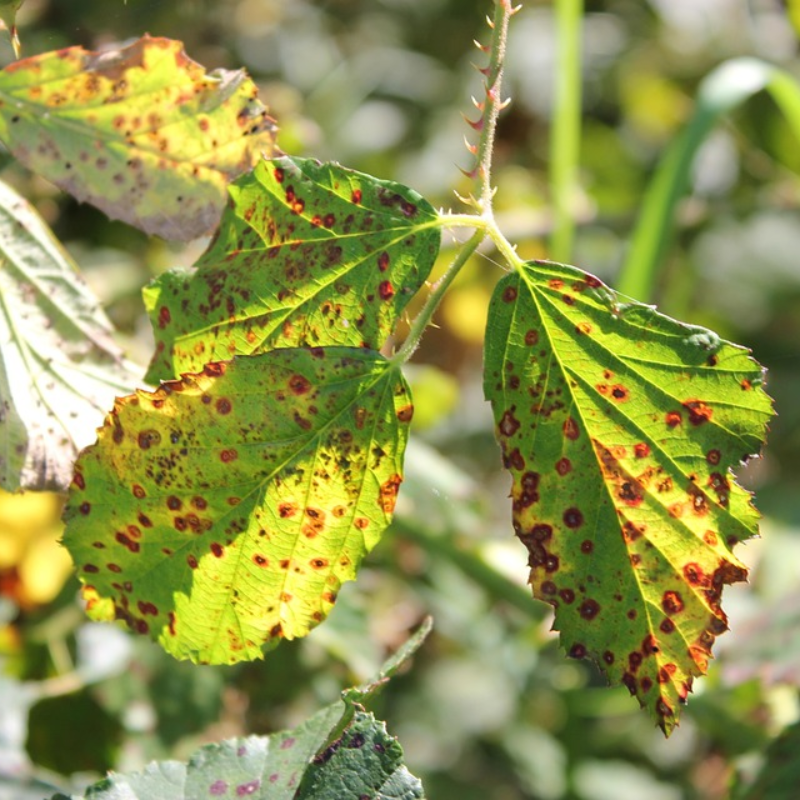Winter is tricky for plants. The cold itself does not always kill them, but it can weaken them just enough for common plant diseases to take over. When temperatures dip, plants struggle to maintain their normal defenses. Cold stress can reduce their ability to fight off infections, making even hardy crops vulnerable. On top of that, fog, dew, and long periods of leaf wetness create perfect conditions for fungi to thrive.
Interestingly, the worst outbreaks often happen when winter starts to ease a little, and temperatures rise to around 15 to 25 degrees Celsius. This is when many pathogens, including those causing blight, rust, and powdery mildew, take advantage.
Most Common Plant Diseases in India
Indoor plant disease flares up under winter conditions. Reduced airflow, stagnant air, and overwatering can trigger house plant diseases like root rot and fungal infestations, even in lucky bamboo plants or jasmine. Here are the common ones to watch out for.
1. Rust Diseases
Rust diseases are among the most common winter plant diseases in India. You might have noticed these on wheat or barley, but other crops can get hit as well.
- Crops / Plants Affected: Wheat, barley, peas, mustard, winter vegetables, and indoor plants like jasmine or lucky bamboo.
- Why winter makes it worse: Cool mornings, slightly warmer afternoons, and high humidity help spores germinate. Crowded plants increase the risk.
Signs:
- Early: Small yellow-orange spots on leaves; slight curling.
- Advanced: Powdery brown streaks on leaves and stems, slowed growth, leaf drop, and lower yield.
Management Tips:
- Outdoor plants: Grow rust-resistant varieties, monitor crops during warming periods, remove infected leaves, space plants for airflow, and use Triazole + Strobilurin fungicides only if infection spreads rapidly.
- Indoor plants: Space plants for ventilation, water the soil instead of leaves, remove infected leaves, and apply neem oil or safe fungicides if needed.
2. Blights

If you are dealing with common house plant diseases, some forms of blight can even appear on indoor plants in moist winter conditions.
- Crops / Plants Affected: Tomatoes, potatoes, mustard, winter vegetables, and indoor potted vegetables.
- Why winter makes it worse: Dew, fog, and high humidity allow spores to germinate. Cold-stressed plants are less able to fight infections.
Signs:
- Tomatoes: Brown or black patches on leaves, sometimes with bull’s-eye patterns (Early Blight).
- Potatoes: Leaf rot, blackened stems, tuber damage (Late Blight).
- Mustard: Dark spots on leaves and pods, early leaf drop.
Management Tips:
- Outdoor plants: Remove infected debris, stake plants to prevent soil splash, rotate crops to reduce pathogen buildup, and apply neem oil or garlic extract if needed.
- Indoor plants: Remove infected debris from pots, trim damaged leaves, ensure proper drainage, and use safe fungicides if the infection spreads.
3. Powdery Mildew

Powdery mildew is one of those winter problems that can quietly take over your garden or indoor plants.
- Crops / Plants Affected: Peas, chili, tomatoes, ornamental plants, and indoor ornamentals like mandevilla or jasmine.
- Why winter makes it worse: Cool mornings, slightly warm afternoons, and poor airflow in dense plantings allow fungi to grow. Indoor plants are more at risk due to stagnant air.
- Signs: White powder on leaves and stems, leaf curling or yellowing, early leaf drop, and reduced flowering or fruiting.
Management Tips:
- Outdoor plants: Thin dense plantings, water the soil instead of leaves, remove infected leaves, and use safe fungicides if the infection spreads.
- Indoor plants: Improve airflow, maintain moderate humidity, water soil only, remove heavily infected leaves, and treat with neem oil if necessary.
4. Leaf Spots and Anthracnose

Leaf spots and anthracnose often appear after plants experience stress from cold or improper watering.
- Crops / Plants Affected: Mustard, vegetables, jasmine, mandevilla, and other ornamentals.
- Why winter makes it worse: Cold stress and water imbalance create entry points for infection.
- Signs: Dark lesions on leaves or stems, stem or fruit cankers, early leaf drop, and stunted growth.
Management Tips:
- Outdoor plants: Trim infected areas, disinfect tools, and improve soil with organic amendments like farmyard manure or Trichoderma.
- Indoor plants: Remove infected leaves, disinfect pruning tools, avoid waterlogging, and ensure proper ventilation.
5. Viral Diseases (Vector-Borne)
.png)
Even in winter, viruses continue to threaten crops and house plants. Tomato Leaf Curl Virus, Mosaic, and other viruses spread through insect vectors like whiteflies and thrips.
- Crops / Plants Affected: Tomatoes, peppers, cucurbits, indoor vegetables, and some indoor ornamentals.
- Why winter makes it worse: Vectors are still present, and stressed plants are more susceptible. Indoor environments can maintain vector populations year-round.
- Signs: Leaf curling, yellow mottling, stunted growth, distorted or irregular fruits, and reduced overall vigor.
Management Tips:
- Outdoor plants: Remove infected plants early, use sticky traps, and apply neem sprays to reduce vector populations.
- Indoor plants: Install fine mesh nets, remove infected plants promptly, and use sticky traps or neem sprays.
6. Root Rot and Damping-Off

Root rot and damping-off are classic winter problems. Cold, wet soil gives fungi the perfect environment to attack roots, which can devastate young plants quickly.
- Crops / Plants Affected: Seedlings of most crops, winter vegetables, and indoor potted plants like mandevilla or lucky bamboo.
- Why winter makes it worse: Low evaporation leaves soil soggy, encouraging fungal growth. Seedlings and young plants are most at risk.
- Signs: Seedlings topple or fail to grow, roots turn brown/black/mushy, and plants wilt even when the soil is moist.
Management Tips:
Outdoor plants: Use raised beds for better drainage, allow soil to dry slightly between watering, treat soil or seeds with Trichoderma, and avoid overcrowding seedlings.
Indoor plants: Ensure pots have drainage holes, avoid waterlogging, let topsoil dry before watering, and treat soil or seeds with Trichoderma.
Disease Risk Calendar for Indian Winters
Here’s a handy table to help you plan your defenses and know when each disease is most likely to strike:
| Month / Period | Temperature Conditions | Main Disease Risk | Examples Seen in Fields |
|---|---|---|---|
| November (Early Winter) | Cool + high humidity | Early Blight, Alternaria on oil seeds | Tomato, mustard |
| December–January (Peak Cold) | Very low temp (1–10°C) | Stress > Infection | Frost injury, root rot |
| Late Jan–Feb (Season shift) | 15–25°C + dew/fog | Highest fungal outbreaks | Rusts, Late Blight, Powdery Mildew |
| March (Warming phase) | Warm days + moisture | Mildew + late-stage viral spread | Pea mildew, Tomato Leaf Curl |
Winter gives pathogens time, moisture, and weakened plants. Prevention beats panic sprays every time. Keep your indoor plant disease identification sharp, maintain good airflow, nurture soil health, remove debris promptly, and apply timely biological protections. That combination keeps crops healthy, houseplants thriving, and makes sure you stay ahead of winter’s disease challenges.
FAQs
1. Why are all my plants dying in winter?
Winter doesn’t usually kill plants by itself. Cold makes plants weak, and wet leaves, fog, and poor airflow allow common plant diseases to spread. Seedlings, indoor plants like mandeviilla, and lucky bamboo plant diseases are more at risk.
2. How can I identify plant diseases?
Look at the leaves, stems, and roots. Signs include spots, curling, yellowing, or mold. Catching problems early helps save the plant.
3. What are four signs that a plant has a disease?
Common signs are:
Leaves curl, yellow, or wilt.
Dark spots or unusual marks on leaves.
White powder, mold, or other fungal growth.
Slow growth or weird-shaped fruits.
4. What is the most common cause of plant disease?
Fungi cause most plant diseases in winter. Bacteria and viruses can also infect plants. Cool, wet conditions make it easy for houseplant diseases to grow.
5. Why do diseases spike late in winter?
In the coldest months, pathogens are slow. When the weather warms a little (15–25°C) and humidity stays high, fungi and bacteria grow fast. That’s why rust, blight, and powdery mildew get worse late in winter.
6. What are the fungal diseases of vegetables?
These are common plant diseases in India, affecting both farms and home gardens.
- Early and late blight (Alternaria solani, Phytophthora infestans)
- Powdery mildew (Leveillula taurica)
- Leaf spots and anthracnose (Colletotrichum spp.)
7. Which bacteria are found in raw vegetables?
Vegetables can carry E. coli, Salmonella, and Listeria. They do not usually harm plants, but can make people sick. Wash vegetables before eating.
8. Can you get a bacterial infection from gardening?
Yes, cuts or scratches can let bacteria like Pseudomonas enter. Wear gloves, clean wounds, and wash hands thoroughly.




Deepak Kathuria
11/1/2025, 07:04 PMWhere is my membership card